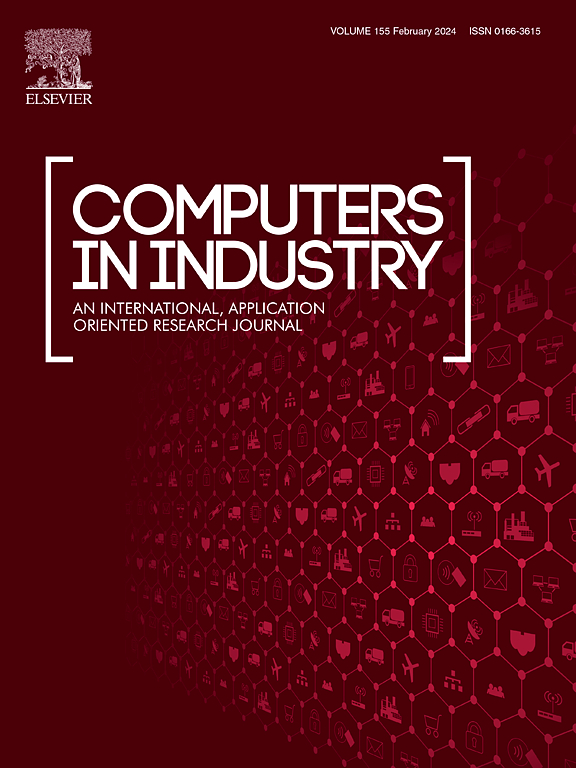SAMAC-R3-MED:多模态工程文档检索者-重新排序者-应答者模型的语义对齐和多智能体协作
IF 9.1
1区 计算机科学
Q1 COMPUTER SCIENCE, INTERDISCIPLINARY APPLICATIONS
引用次数: 0
摘要
在制造业的生命周期中,会生成大量文本、表格和图像格式的工程文档。检索增强生成(RAG)模型可以提高检索效率,适应不断变化的文档知识。然而,在理解多模态语义关联方面的挑战和缺乏与工程语义一致的RAG模型导致精度不理想。本文介绍了一种新的方法,即SAMAC-R3-MED,来解决这些挑战。首先,将细粒度上下文增强策略应用于多模态大语言模型(mllm),通过构建多模态语义树(MMST)和多模态知识图(MMKG)架起多模态语义理解的桥梁,形成混合检索库;其次,为了弥合RAG模型中的语义差距,提出了一种新的训练框架,即检索者-重新排序者-应答者(R3),利用有监督和强化学习与排名反馈来增强一致性。第三,针对多智能体协作R3模型,采用多通道混合检索策略,集成专家反馈、语义树和图,优化RAG管道,提高检索多模态关联语义上下文的准确性。以风力涡轮机装配为例,实现了一个工程文档聊天(eDoChat)系统,验证了检索和生成准确多模态答案的有效性。消融实验表明,R3模型优于传统的RAG模型,SAMAC-R3-MED在多模态检索和生成任务中取得了最先进的结果。本文章由计算机程序翻译,如有差异,请以英文原文为准。
SAMAC-R3-MED: Semantic alignment and multi-agent collaboration of retriever-reranker-responder models for multimodal engineering documents
In the manufacturing industry's lifecycle, a vast amount of engineering documents in text, table, and image formats is generated. Retrieval-augmented generation (RAG) models can enhance retrieval efficiency and adapt to evolving document knowledge. However, challenges in understanding multimodal semantic associations and the absence of engineering-semantic-aligned RAG models result in suboptimal accuracy. This paper introduces a novel approach, namely SAMAC-R3-MED, to tackle these challenges. First, a fine-grained context enhancement strategy is applied to multimodal large language models (MLLMs), bridging multimodal semantic understanding by constructing multi-modal semantic trees (MMST) and multi-modal knowledge graphs (MMKG), forming a hybrid retrieval base. Second, to bridge the semantic gap in RAG models, a new training framework, retriever-reranker-responder (R3), is proposed, utilizing supervised and reinforcement learning with ranking feedback to enhance alignment. Third, a multi-channel hybrid retrieval strategy is implemented for the multi-agent collaboration R3 models, integrating expert feedback, semantic trees, and graphs to optimize the RAG pipeline and improve the accuracy of retrieving multimodal associative semantic contexts. An engineering documents chat (eDoChat) system is implemented, in the case of wind turbine assembly, validating the effectiveness in retrieving and generating accurate multimodal answers. Ablation experiments show R3 models outperform traditional RAG models, and SAMAC-R3-MED achieves state-of-the-art results in multimodal retrieval and generation tasks.
求助全文
通过发布文献求助,成功后即可免费获取论文全文。
去求助
来源期刊

Computers in Industry
工程技术-计算机:跨学科应用
CiteScore
18.90
自引率
8.00%
发文量
152
审稿时长
22 days
期刊介绍:
The objective of Computers in Industry is to present original, high-quality, application-oriented research papers that:
• Illuminate emerging trends and possibilities in the utilization of Information and Communication Technology in industry;
• Establish connections or integrations across various technology domains within the expansive realm of computer applications for industry;
• Foster connections or integrations across diverse application areas of ICT in industry.
 求助内容:
求助内容: 应助结果提醒方式:
应助结果提醒方式:


